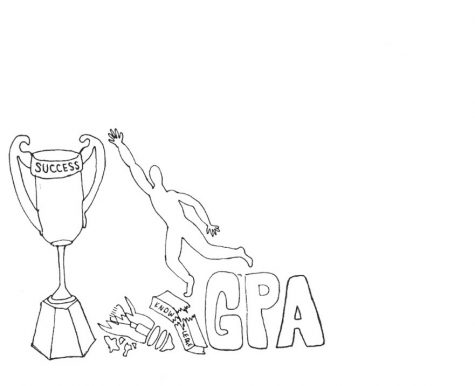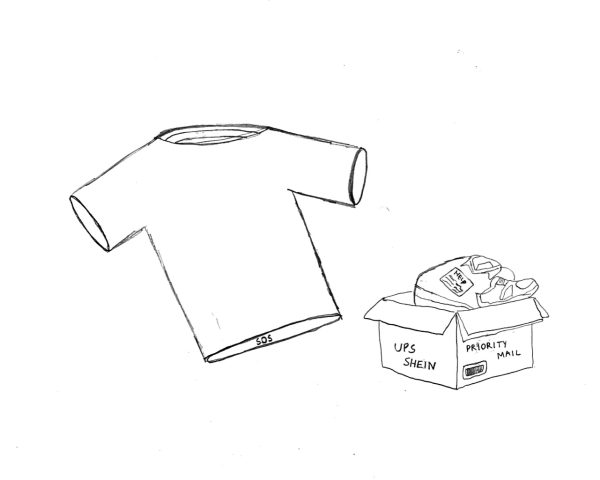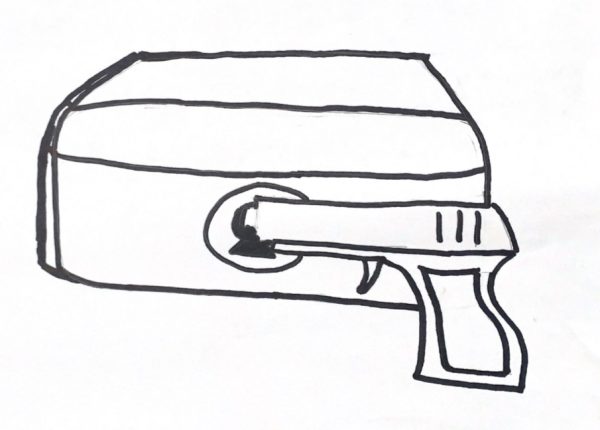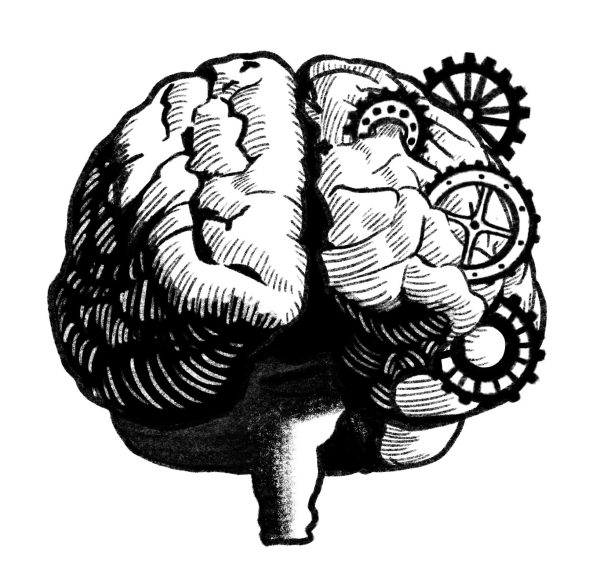F is for a Flawed Grading System
October 4, 2019
Grade Point Average (GPA): an accumulation of scores from tests on subjects that are applied once and often never used again. Four years of cramming for math tests and analyzing essays are rewarded simply by a number, rather than intellectual understanding. This number is powerful for many students as it plays a role in determining their success in the college admissions process. But is it fair for high schoolers to be judged based on a couple of digits?
A survey by New York University found that 49 percent of students feel a concerning amount of stress on a daily basis due to academics. Out of these students, the average female GPA was 3.57 and the average male was 3.34. According to the survey, these students felt the need to perform well, many taking on heavy AP course loads they were unprepared for. As a result, they became overloaded with work and their stress levels increased––understandably so. When trying to juggle AP course loads, extracurriculars and college applications in the later years of high school, it can be difficult to manage. As a result, when it gets close to finals, it can feel easier to memorize the entire study guide instead of trying to reabsorb information and risk hurting one’s grade.
Not only does the grading system add to students’ stress levels, but also to self-esteem issues. In a study by the University of Michigan in 2002, researchers found that 80 percent of students based their self-worth on academic achievement. I can attest that working hard on an essay and receiving back a low score can be hurtful. For me, it becomes difficult to focus on anything else but the poor grade and, in turn, I doubt my intelligence.
Although some may not be as concerned by their academic achievements, student-athletes are among intellectuals worried about their GPA. Redwood High School athletes must acquire at least a 2.0 GPA to participate on the team. Most Redwood sports practice daily, causing some athletes to have too much on their plate with both academics and sports. Many athletes can use their athleticism as a boost to get into college, yet it gets more complicated when they are spending valuable training time trying to maintain their GPA.

Not only is the grading system difficult for players, but it makes it challenging for pupils that understand through less traditional learning styles. For example, kinesthetic, or hands-on, learners have a tougher time than the students that learn through more conventional teaching strategies, such as aural and visual. As a result, kinesthetic learners may perform worse and receive lower GPA’s.
Retaining information can also be challenging for some. I have found that high performing test-takers can easily recall facts, along with coping well in a high-stress environment. For some learners, school comes naturally to them. This differentiates the student receiving an A on a test with little to no studying from the B student, discouraged by their performance after hours of studying. The A student ends up with a higher GPA and greater opportunities than the B student because GPA does not factor in more than grades.
Another flaw with using GPA’s in the grading system stems from the fine line between an A- and a B+. Technically, a B+ is an 89.9 percent, whereas 90.0 percent is an A-. Although there is only a 0.1 percent difference, the student with the B+ gets a 3.0 GPA, when the A- student gets a 4.0. Some teachers will round 89.9 percent up to 90 percent for this reason, but it is not guaranteed. When the majority of my teachers handed out their syllabi this year, I discovered that they refuse to round grades. This worries me for the end of the semester as some of my grades could land on the cusp.
Tests, in my experience, are often the majority of a class’s grade. If this is the case and a student does all of the homework and participates in class, yet does poorly on tests, they will not be recognized for their in-class effort. This issue also goes the other way with cheating on tests. A student can obtain the answers to a test and get a high score for falsework. If the teacher never discovers the cheating, the dishonest student receives a better grade in the class than the hardworking student. This vicious cycle continues throughout high school and college, and receiving a grade for the right reasons becomes less common. Eventually, students use cheating as a way out for so many quizzes, that they won’t be able to do their own work as they enter adulthood.
Another downside for the hard worker is that grades do not account for bad days or personal emergencies. Because unforeseen circumstances like these can come up, students should instead be graded based on effort and improvement. They should be awarded for their work rather than which student remembers more obsolete knowledge about World War I. Pop quizzes are not the extent of one’s future, so a GPA should not influence how they perceive themselves and the amount of stress they are put under because that number reveals only a small portion of their potential.






















